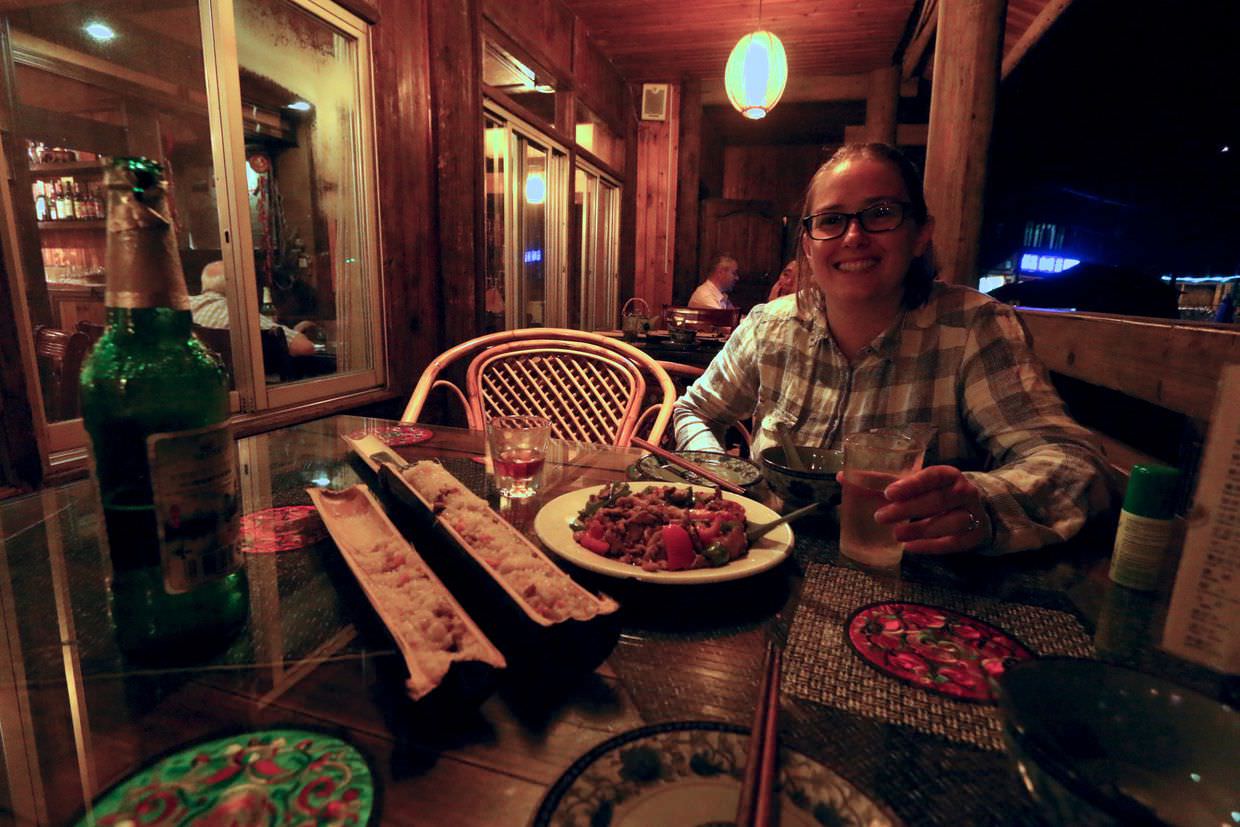Two days in Ping’an
Yangshuo to Ping’an
In the back of a minibus, driven by a maniac, we hurtled north from the limestone karst mountains of Yangshuo to the extraordinary rice terraces of Longsheng (龙胜梯田, Lóngshèng Tītián — also known as Longji Rice Terraces, 龙脊梯田). The journey took 3h30 and we stopped a couple of times for food and fresh fruit from roadside stalls, spotting a Monarch butterfly was also a highlight (especially as they aren’t known to be in this area). Joining us in the minibus were a lovely Belgian couple, Mieke and Roger, retired teachers who we’d spend much of our remaining holiday with. They’d also booked through Rickshaw Travel, and were leaving Yangshuo too.
Driving west of Guilin we passed through the half built city of Línguì. It was like a ghost town, 6 lane roads were empty, newly built condos vacant, buildings waiting for shops and inhabitants, mere concrete shells. “If you build it they will come”, supposedly. Everywhere we went in China there was rapid construction and expansion, skyscrapers growing in every city and town, 40 floor condominiums waiting for buyers. No doubt because the Chinese government is pumping so much money into construction projects. Guesthouses were even being built by the dozen in Ping’an.
A hike to our guesthouse
Beyond the park entrance for the Dragon’s backbone rice terraces there are two roads up to the remote villages of Píng’ān and Dàzhài. Unfortunately the car park closest to Píng’ān was connected to a road that suffered a massive landslide, six weeks later the road still hadn’t reopened. Our mad driver took a different road, and after speeding around hairpin bends with sheer-drops at the edge, he dropped us off as close as he could — over an hours hike uphill from our hotel.
Luckily, hiking to your hotel is common and the villages provide a service to help. Four small ladies, none taller than 5ft, came rushing towards us, each with a wicker basket on their backs, big enough to carry our great lumping 20kg backpacks (by now they were laden with all the tourist stuff you buy when you’re on holiday). For 1h30 it cost us 100 yuan per bag, about £10. The four of us, and the four bag carriers then set off up the steep hill towards the villages.
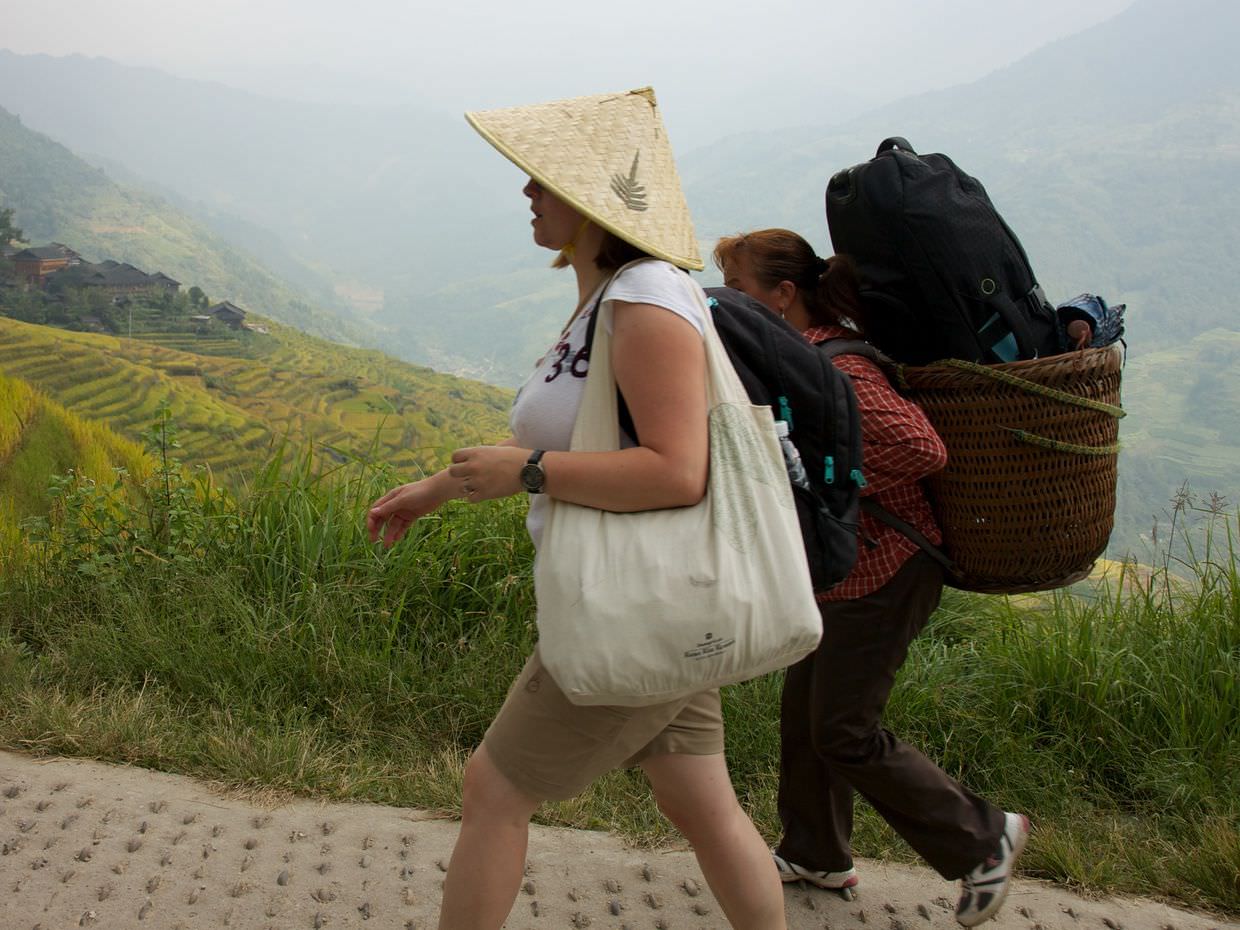
The tarmac’d road turned to steps, to thin old stone paths and there’s no way we could have got our bags there any other way. What we didn’t learn until after is that there are storage areas and lockers near the ticket office — because why carry all the luggage up there? A day bag would’ve been fine.
First glimpse of golden terraces
Before travelling here we knew that the rice terraces were best in May, when the paddies are filled with water and are reflective. We expected a full green crop of rice, we didn’t know that as autumn approaches the rice turns golden yellow, two weeks before it’s harvested (harvesting is usually just after the Chinese golden week holiday). This yellow rice, which ripples through the terraces is spectacular, and a photographer’s dream come true (we passed at least two photography groups making the most of the timing). Our caravan of 8 hiked through these incredible scenes, onwards and upwards, until we reached Píng’ān.
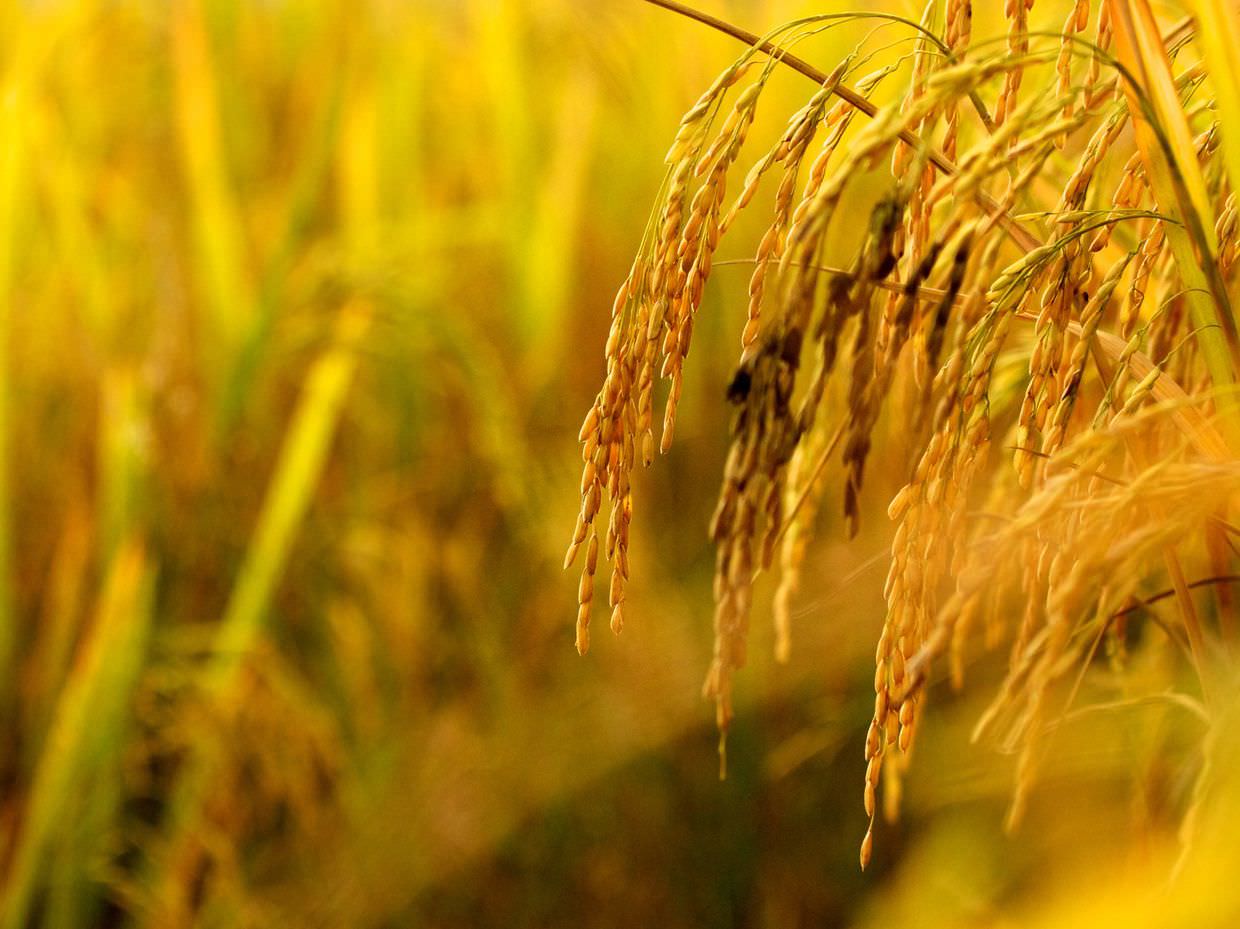
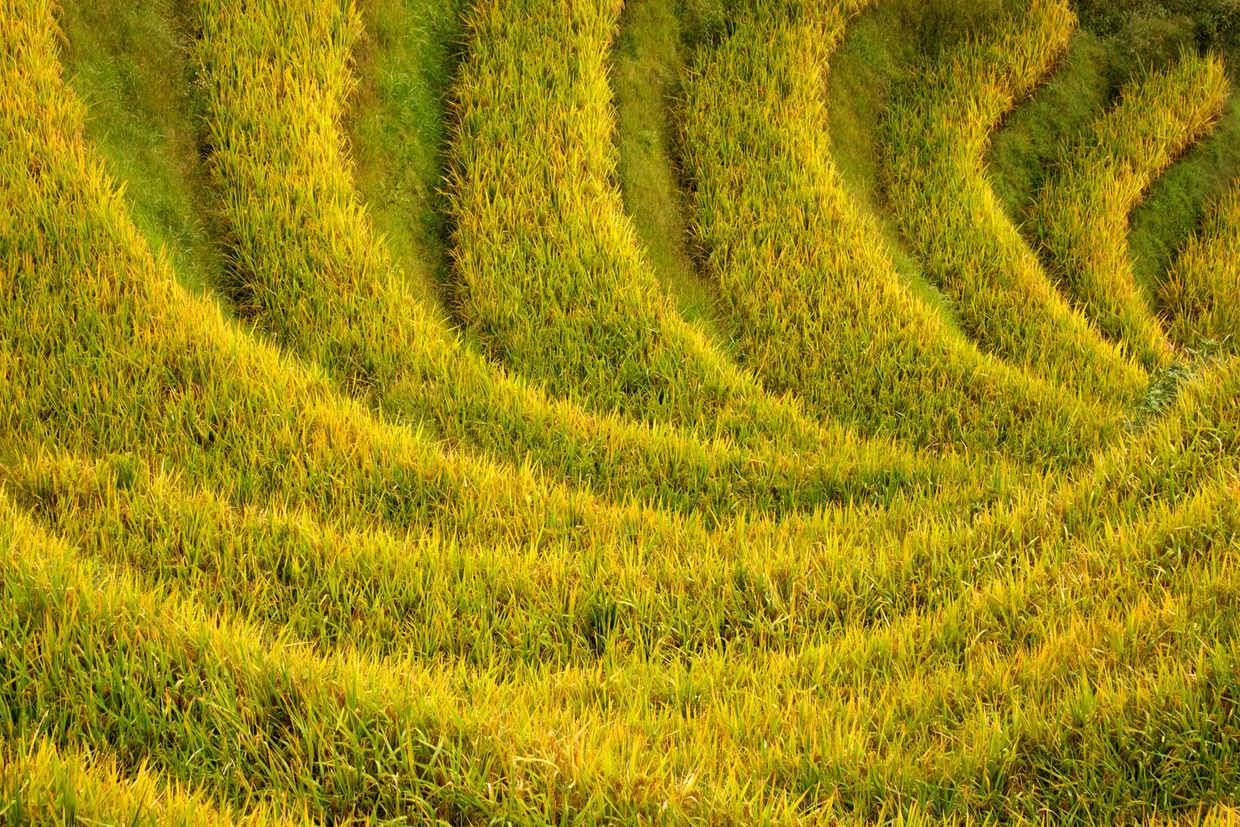
Ping’an and Liqing hotel
Píng’ān is the largest of the villages with many guesthouses, each with its own restaurant, it seems most folk eat at their hotel. There are no roads, just narrow paths with stone floors, and they’re usually climbing steeply up or down as part of a hillside labyrinth. Most buildings sit on wooden stilts, leaning precariously into the valley, the timber structure often continuing into the walls and rooftops so as to look like ski chalets. Our hotel, Liqing hotel, was no exception. The Lonely Planet warned of large Chinese tour groups but we saw none, probably because of the closed road — which made our stay pleasantly quiet.
I expected our room to be quite basic, like in Songpan, but it exceeded expectations; a large bed, a balcony, a big enough bathroom. Just enough and nothing more. The food was alright too, and when we arrived, sweating and aching, we devoured their fried rice, fried noodles and spring rolls, washed down with a litre of cold lager.
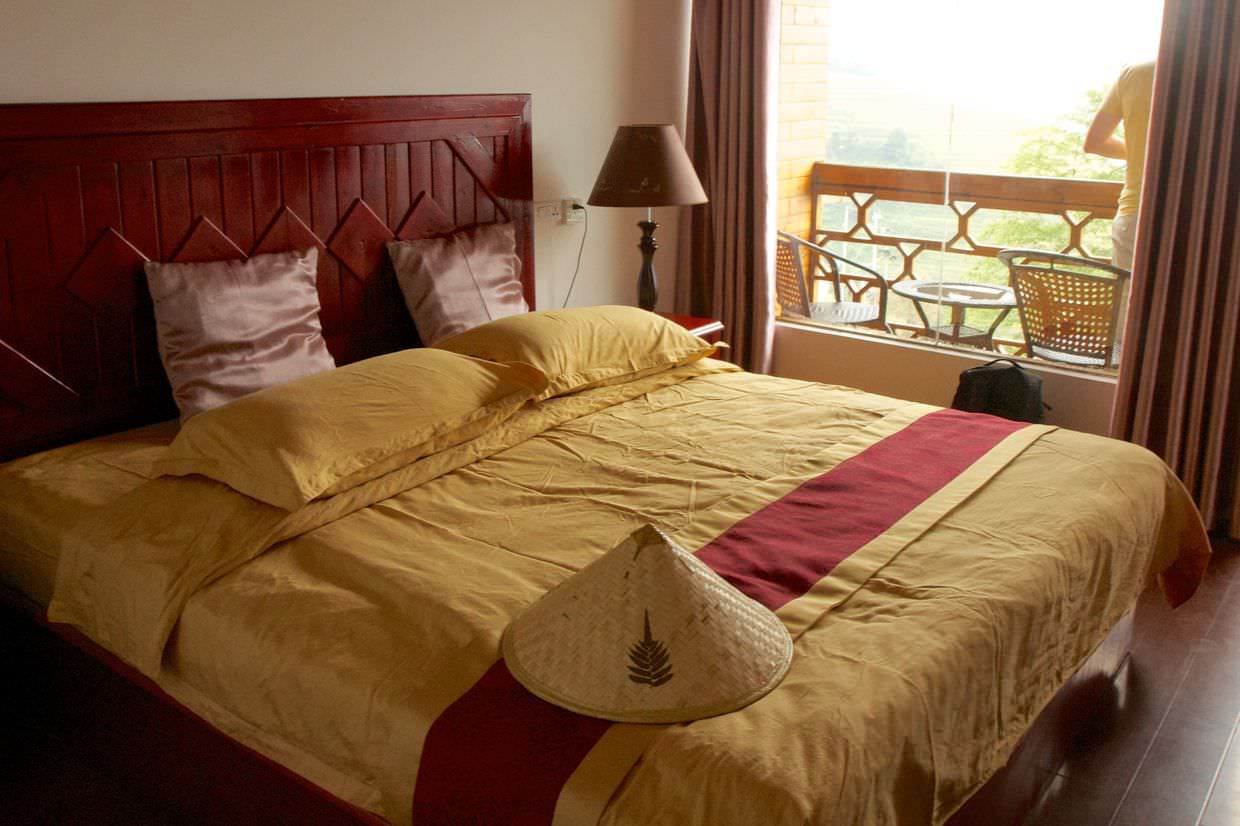
Evening in Ping’an

After a nap we still had time enough that evening to explore and take photos. We doubled back along the route we’d walked in on to find the perfect spot to picture the crescent yellow terraces. The light faded faster than expected, owing mostly to the sun going behind a mountain long before sunset and the sudden onset of rain, a dark cloud materialising from nowhere. Hiking back into town we found Victor, a businessman from Shanghai, photographing the scenery with his expensive camera; he was on a photography trip with a large group — we passed him a few more times while there and he always said hello.
We’d eaten recently and didn’t need a massive dinner, so we stopped at the Píng’ān guesthouse, which was busy, with a friendly atmosphere, and ordered the local sticky rice in bamboo alongside a chicken curry — albeit a tasty curry quite different to any we’ve had before. Sam also enjoyed the local Osmanthus wine which tasted a little like madeira. Our ears were filled with the tales of an ex-trucker Australian recanting her travels around Asia, to her table and everyone else’s.
